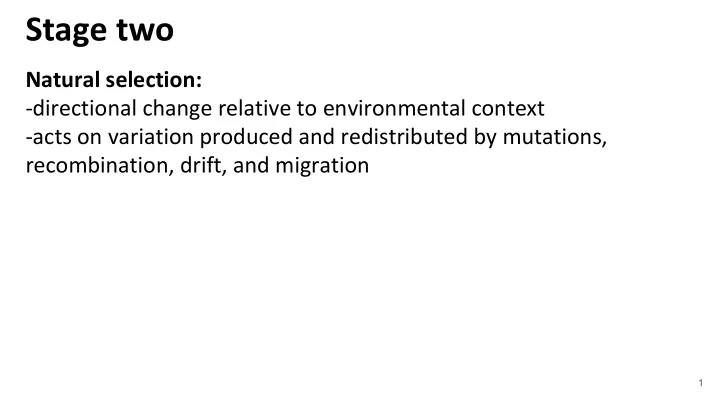

Stage two Natural selection: -directional change relative to environmental context -acts on variation produced and redistributed by mutations, recombination, drift, and migration 1
Anthropology example of natural selection Sickle-cell anemia: genetically inherited blood disease Mutated hemoglobin collapses red blood cells into sickles leading to anemia and death Normal dominant allele = Hb A Mutated recessive allele = Hb S 2
Anthropology example Expect: selection against Hb S (sickle-cell allele) Instead: 30% some regional populations are carriers 3
Anthropology example Correlation between: regions malarial pressure and high frequencies of the Hb S allele Malaria: deadly parasitic infection spread by mosquitoes 4
Regions of note Mediterranean, Arabian peninsula, Southeast Asia, W. Africa Biocultural evolution example -slash-and-burn agriculture: mosquito breeding areas near humans 5
Anthropology example In regions where malaria is present: Malaria acts as a selective agent favoring heterozygotes Malaria kills homozygotes for the normal allele pair Anemia kills homozygotes for the recessive allele pair Heterozygotes (carriers) are more fit Natural selection increases the frequency of Hb S allele in West African populations 6
Classifying biology Question: Which is the most similar? -classify by looking at evolutionary relationships Answer: croc and pigeon 7
Macroevolution Macroevolution: larger scale change over geologic time Classification: categorize organisms to understand evolutionary relationships Kingdom: Animalia Phyla: Chordata Class: Mammalia Order: Primate Family: Hominidae Genus: Homo Species: sapiens 8
Homologies Homologous traits: similarities due to common descent E.g., birds, bats, mice, crocs all have four limbs Contrast with analogies : similarities due to common function 9
Two types of homologies Ancestral traits: traits that have been inherited from a remote ancestor 10
Two types of homologies Ancestral traits: traits that have been inherited from a remote ancestor Derived traits: have been modified from the ancestral condition 11
Schools of classification Evolutionary systematics -constructs phylogenetic trees: -hypothesizes about ancestor-descendant relationships -time dimension 12
Schools of classification Cladistics -use shared derived traits to identify new species Clades: lineages sharing a common ancestor -Anthropologists mostly use cladistics 13
Recommend
More recommend